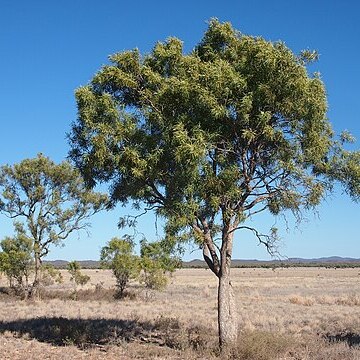A small tree. It grows 4-6 m high. The bark is grey and rough. The leaves are compound. There are 1-3 pairs of long leaflets. The leaflets are opposite. These are 6-15 cm long by 0.5-2 cm wide. They narrow to the base. The flowers are white and hairy. They are 0.8-1 cm across. The fruit is hairy. It has 2-3 lobes. Each lobe is 3-4.5 cm long by 1-1.5 cm wide. There are prominent wings.


